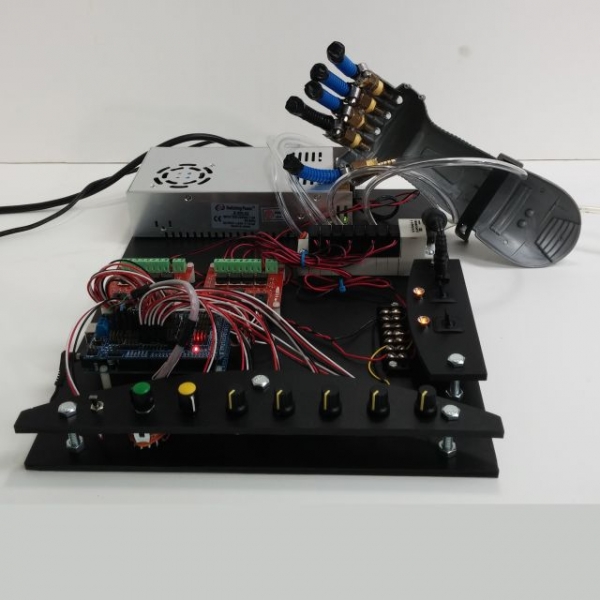Design
The design for the actuators of the soft robotic hand is based on the concepts of fiber-reinforced actuators, but the materials and fabrication techniques are much simpler. Ribbed plastic hose, of the kind found on inexpensive foot pumps, is used as the reinforcing material.

A standard latex 350Q balloon, the kind used for making balloon animals and available at any party store, is used as the inner bladder.

There is a clear trade-off in reliability, as many of the fingers eventually failed... sometimes quite comically as the balloon expanded through the failed plastic of the constraining ribbed hose (see Actuator Testing and Performance section). Nevertheless the low cost and ease of fabrication make this a reasonable option where reliability is not a key factor. It is fairly easy to make a new finger to replace a broken one as needed.
Each actuator forms a finger, which was combined to make a completed hand by fastening to a toy armor gauntlet that happened to be available.

The subsections will outline the design of the individual actuators, the hand as a whole, and the control board.
Actuator Design
Balloons of the type used for twisting animals and other fun things for kids seemed the clear choice of material for the inner bladder. The 350 type balloons (3 inches wide, 50 inches long) were chosen over the 260 type (2 inches wide, 60 inches long) most commonly used for twisting balloon shapes. The 350 balloons felt more durable than the 260s; the latex may have greater wall thickness. These balloons are easily available and suited the purpose well.
The selection of the reinforcing material, however, took considerable trial and error. PVC tubing of various sizes and types, and even latex reinforced work gloves were tried. The standard PVC tubing split easily, while the braid reinforced type was too hard to bend. The gloves did not provide enough structure. In the end, what worked best was a ribbed plastic hose that came from an inexpensive foot pump. This is the blue hose shown in the picture below.
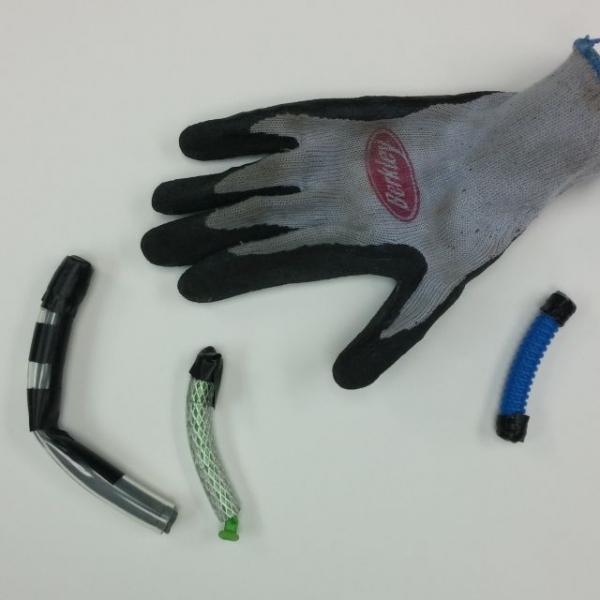
The hose has a slight natural bend to it, similar to a human finger when held at rest. Stress relief holes are used on each side of the hose between each rib to reduce the chance of the hose splitting. Slices between each rib along the upper side of the curve, extending to the stress relief holes, allow the finger to bend when the balloon is inflated.
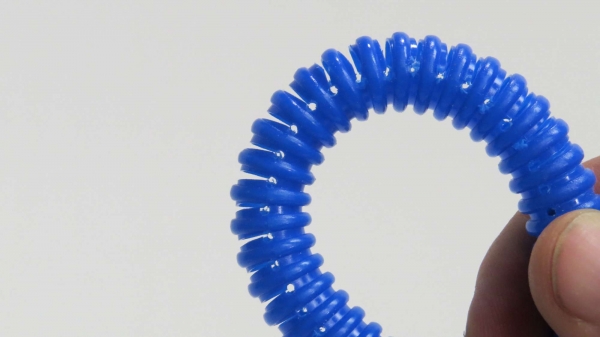
The tip of the finger is blocked so the balloon cannot expand in that direction. So when the balloon is inflated with pressurized air, the only way the balloon can expand is by bending the finger.
Hand Design
The design is a simple analog for a human hand. For simplicity, a plastic toy armor gauntlet was used as the platform for the five actuators. One happened to be available. A simple wooden board or other platform would have served, but wouldn't have looked as nice.
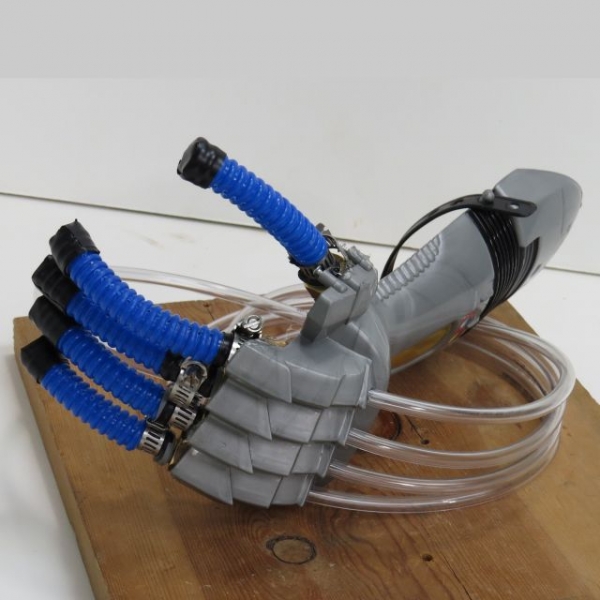
The thumb is opposed to the fingers as in a human hand. This allows for some gripping capability. However, because all the fingers are fixed with only the ability to flex as their movement, the effectiveness of the gripper is limited. In a human hand, there are many more degrees of freedom, of course.
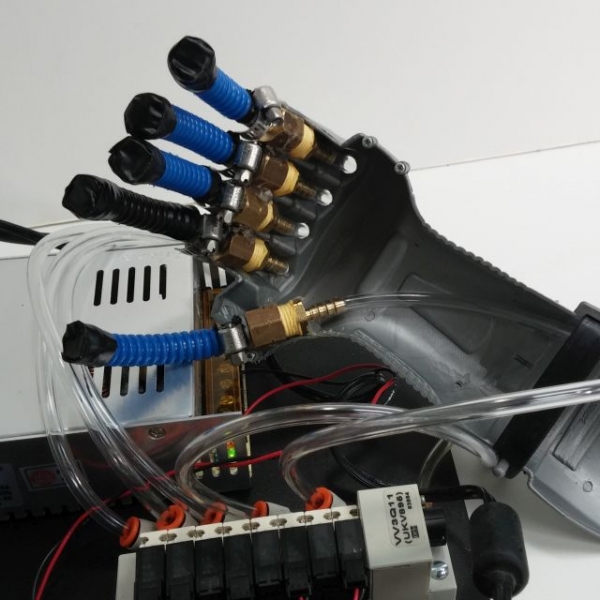
Control Board Design
The design of the control board was based on the fluidic control board in the soft robotics toolkit.
A few key differences to note are:
- Pressure sensors were eliminated to reduce cost.
- An 8-valve manifold was used to leave room for future expansion.
- Instead of an on-board compressor, an off-board workshop air compressor supplies the necessary pressurized air.
- Power is provided by one 12V DC and one 24V DC supply.
- A sensor shield (daughter board) was used with the microcontroller to make electrical connections easier.
- Five potentiometers (one for each finger) provide manual control over each actuator.
- One potentiometer allows you to vary the Pulse Width Modulation (PWM) frequency used to control the flow of air to the actuators.
- A toggle switch allows you to either select manual control with the five potentiometers, or programmed control.
- A 12-position rotary switch lets you select between twelve different hand positions and gestures.
- Choice of black for the color is much cooler.
